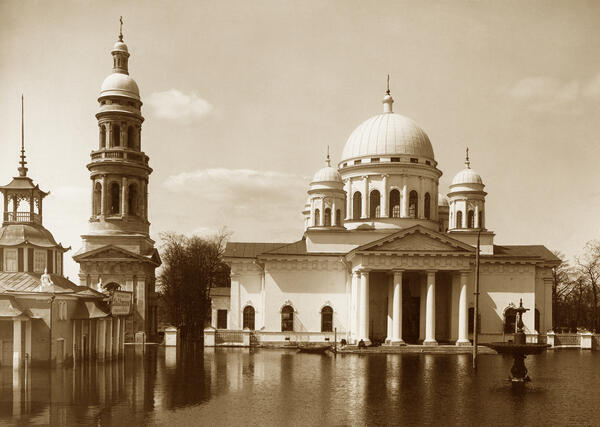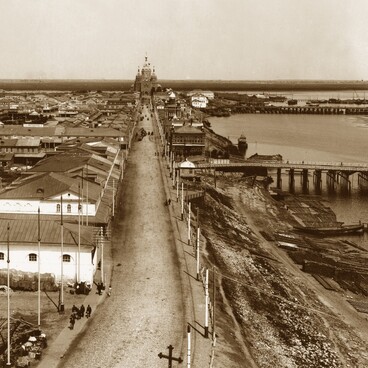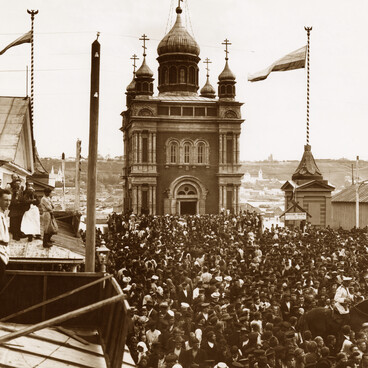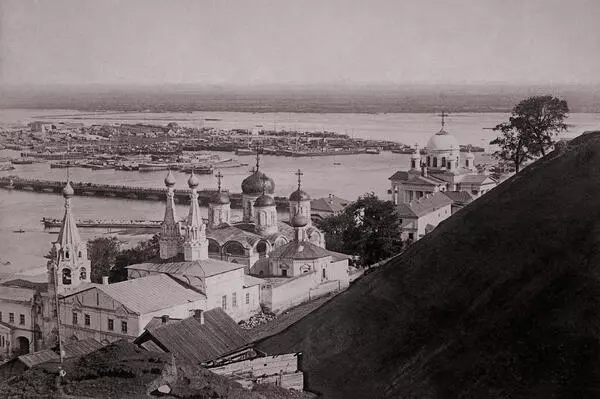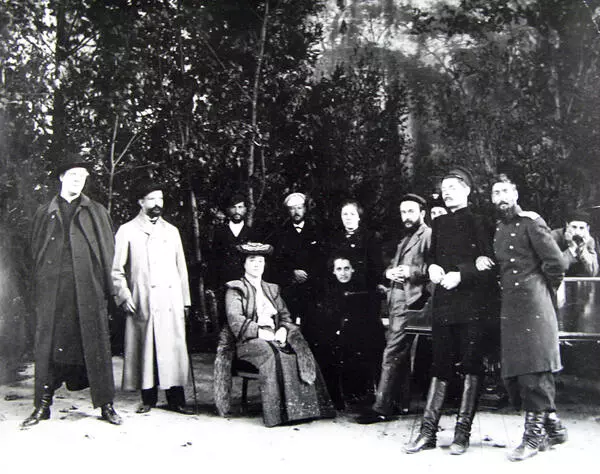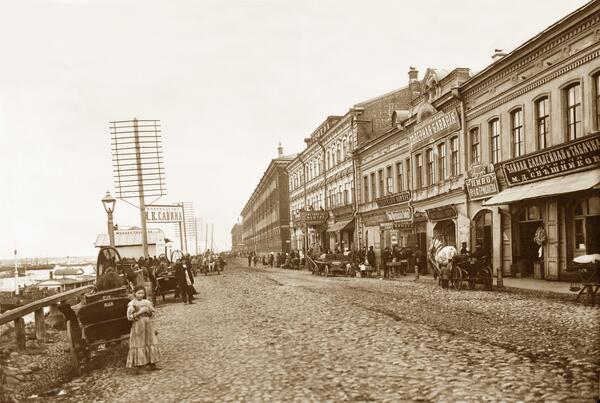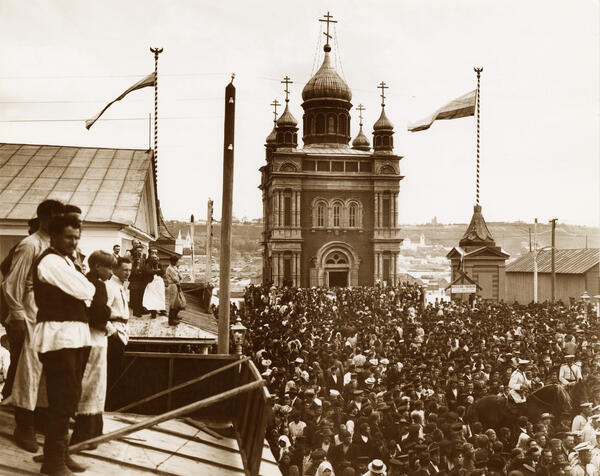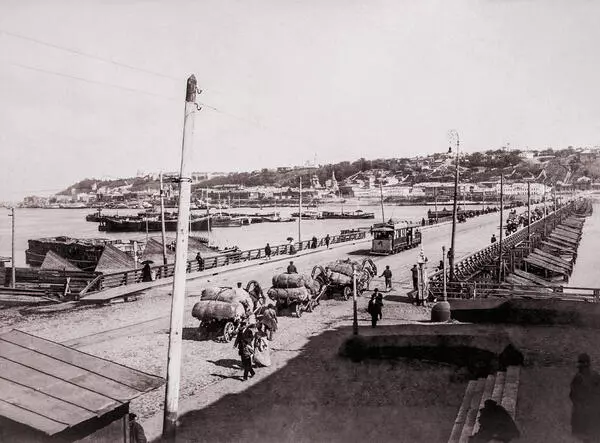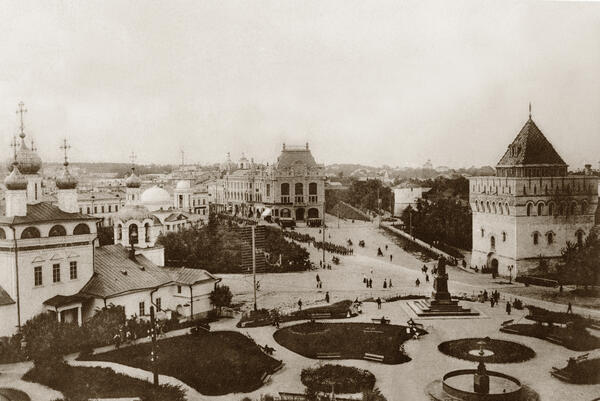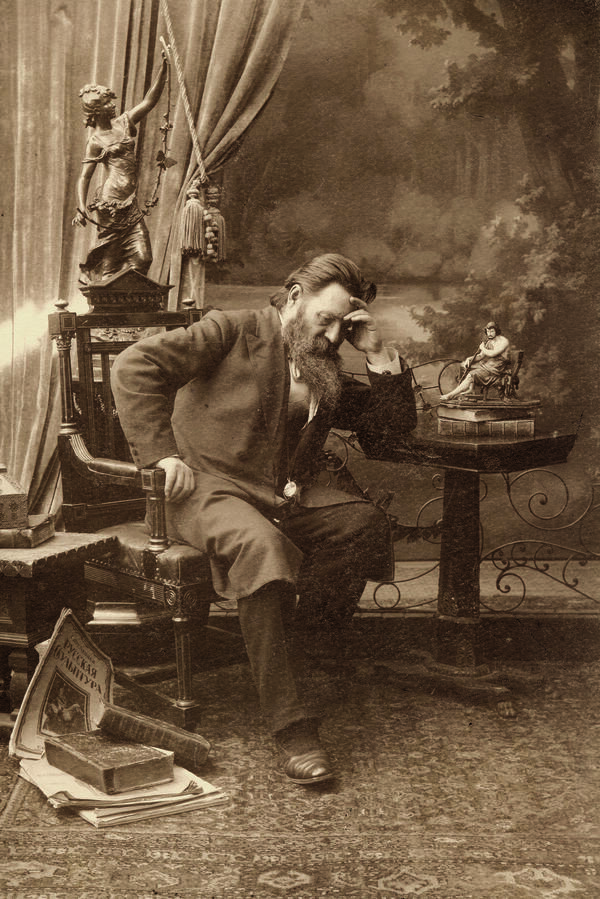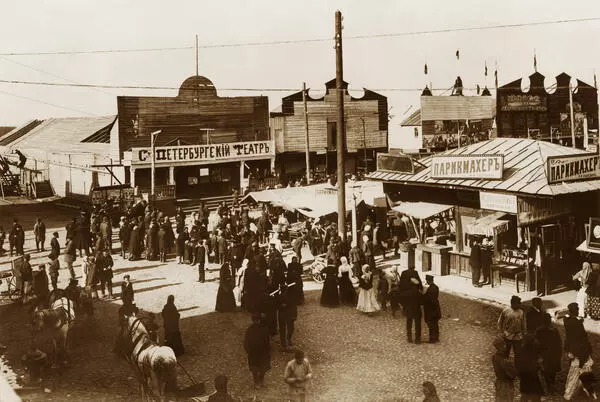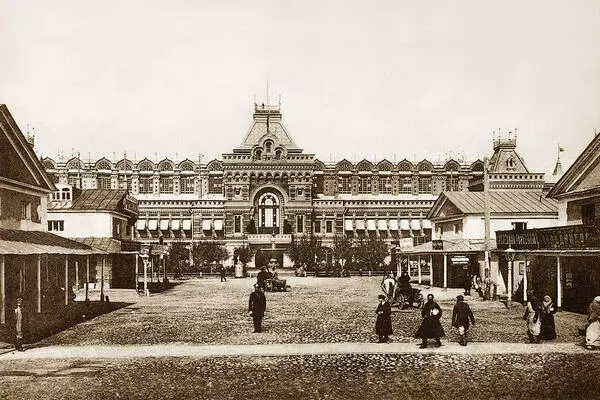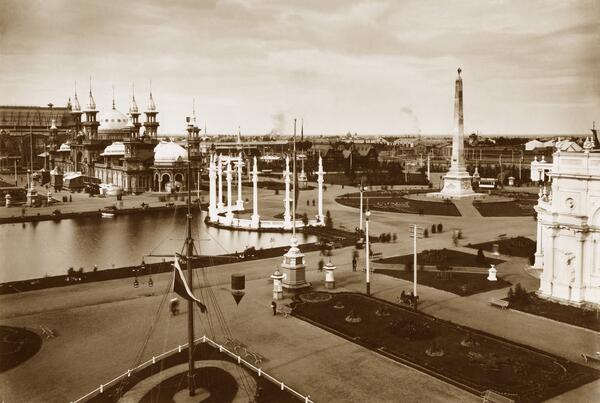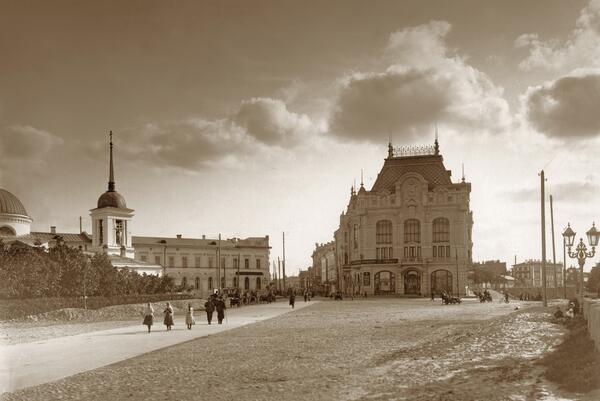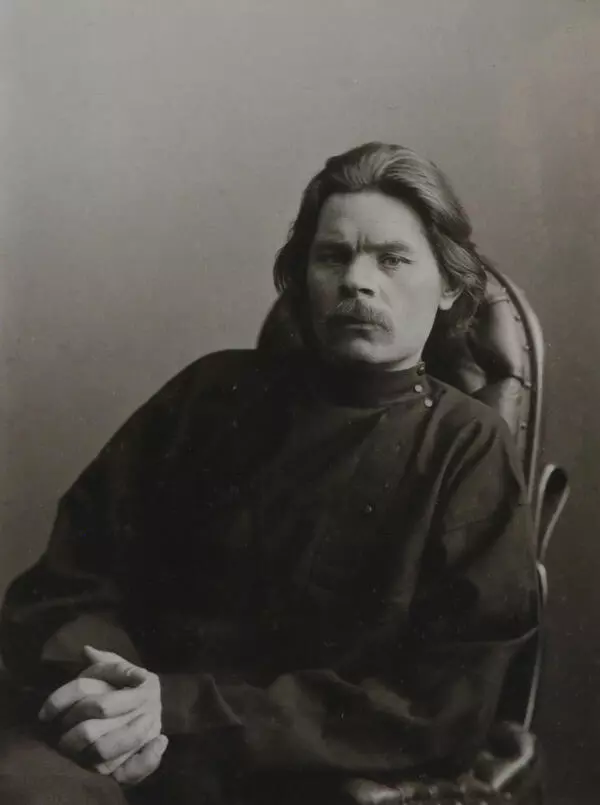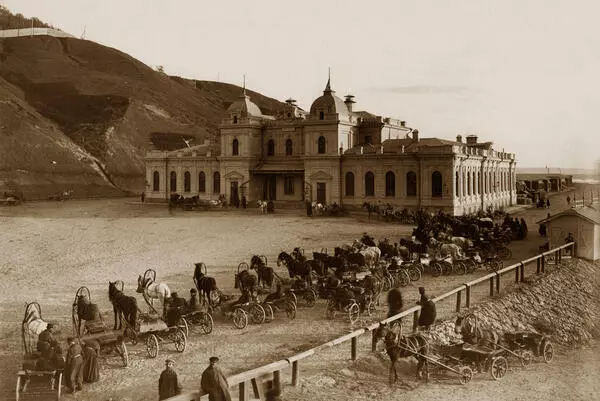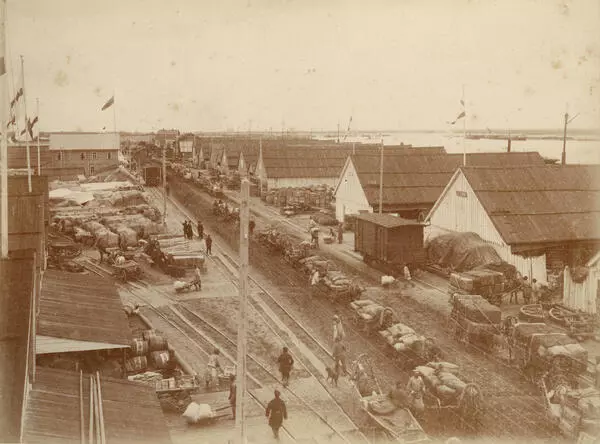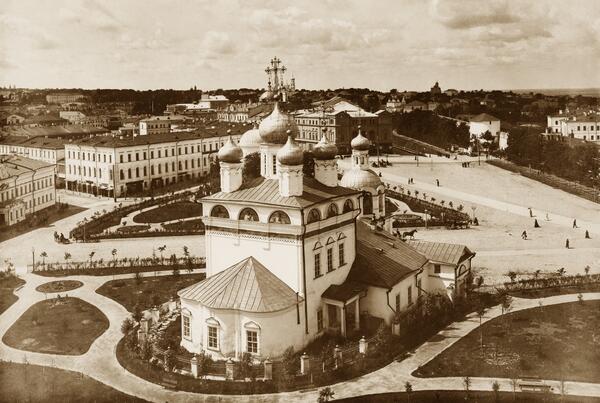The Spassky Old Fair Cathedral was built in 1818–1822. It was designed by Auguste de Montferrand, who was working on the project of the Saint Isaac’s Cathedral in Saint Petersburg at the same time. The iconostasis of the cathedral was painted in line with European canons, and this led to many merchants refusing to pray in front of the icons that depicted nude body parts. Some even brought icons with them. Eventually, a new iconostasis was created by the architect Vasily Petrovich Stasov. The walls, the pillars supporting the dome, and the dome itself were decorated with exquisite moldings and paintings on Gospel themes and depictions of saints.
The cathedral has many elaborate icons donated by merchants from various Russian cities. Opposite the northern side of the cathedral is a house for clergymen, with a bell tower rising above it. The upper floor of the house is occupied by a winter church of the Mother of God of Kazan. The iconostasis of this church was made by Kazan merchants. There is also an ancient icon of the Mother of God of Kazan, decorated with rich plating with precious stones. This icon was sent as a gift to the cathedral by State Chancellor Count Nikolay Petrovich Rumyantsev in 1824.
The Old Fair Cathedral, like many other buildings of the fair, was situated in a lowland. Soon after the construction had been completed, it became clear that this area was subjected to severe river floods. In spring, the water would reach the fairgrounds, often flooding them. One of the strongest floods happened in 1849 when eyewitnesses claimed that it was possible to swim into the Old Fair Cathedral in a boat.
A Chinese market is on both sides of the cathedral to the east and west. It consists of four buildings, two on each side, built in the Chinese style, with galleries and stalls. There are 84 Chinese stalls in total. Their walls are painted with yellow paint, and their roofs — with red; the stalls are decorated with plaster figurines of Chinese men and women.
Kyakhta (Chinese) stalls traded in teas (black, flower and green), silk fabrics (kanfa — Chinese satin, crepe), juice paints, curtains, porcelain, chibouks and fruits. The trade also involved buying fur and leather goods, mirrors, clocks, canvas, gold, silver and other metal items for exchange in China.
